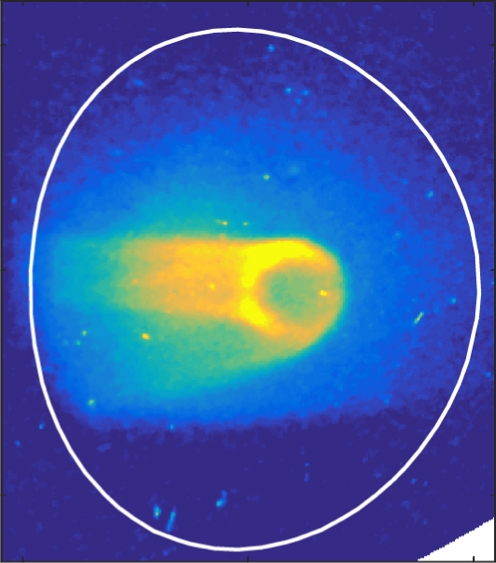Scientists at the DIII-D National Fusion Facility have for the first time studied the internal structure and stability of high-energy runaway electron (RE) beams in a tokamak. The scientists used hard X-ray radiation to study the RE beams. The finding could provide a way to control the damaging potential of RE beams. This could contribute to future power production using tokamak fusion power plants.
The Impact
Sudden loss of plasma confinement in large tokamaks can lead to the formation of electrons moving close to the speed of light. These electrons, known as “runaway electron beams,” can severely damage the wall of a tokamak. Researchers must avoid or mitigate RE beams to ensure the success of the ITER fusion reactor and the commercial power plants that may follow in the future. This research suggests that scientists can control and dissipate RE beams in a tokamak by exploiting RE-driven instabilities.
Summary
The DIII-D team deliberately created an RE beam to analyze the individual electrons in the beam. The researchers used a unique approach that involved long-lived RE beams at low current and ultrafast measurements of the gamma radiation from the REs. This approach allowed the researchers to study the internal structure of the RE beam. The results suggest that REs with a certain energy can excite kinetic instabilities in the fusion plasma. These instabilities can in turn weaken the RE beam before it causes damage. The study also showed that other types of instabilities driven by RE current are also possible, and these different instabilities could cause an uncontrolled release of REs. Researchers do not yet know whether this uncontrolled release of REs would be a problem or benefit for future devices. The results, therefore, point to future research on the mitigation and control of disruptions in tokamaks.
Funding
This material is based on work supported by the Department of Energy Office of Science, Office of Fusion Energy Sciences, using the DIII-D National Fusion Facility, a DOE Office of Science user facility.
Original post https://alertarticles.info




